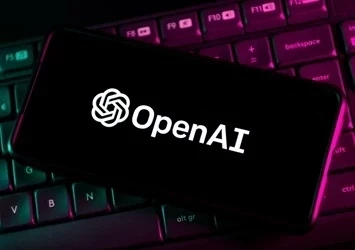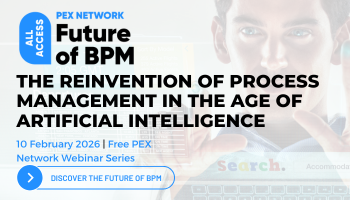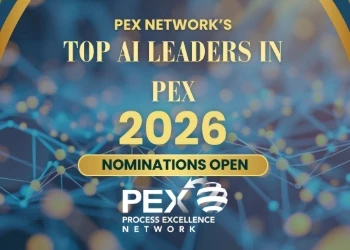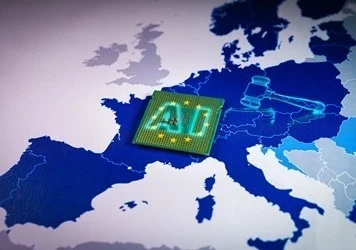The ‘open’ illusion: 3 lessons learned from OpenAI’s strategy leak
Are we seeing the ‘open’ in OpenAI become meaningless?
Add bookmark
Last month, in an article titled “AI at the crossroads,” I laid out two potential futures for OpenAI. One path led to an open ecosystem of shared protocols and falling prices, while the other led to a “walled garden,” a beautifully designed product so compelling that users would pay to be locked inside.
That was 12 June. Six weeks later, strategy documents filed on 16 July 2025 in a Department of Justice antitrust case would confirm every detail of that prediction. However, being right about the past only matters if it helps us shape the future, and the window for shaping this one is closing fast.
OpenAI is not just leaning toward the walled garden, it is pouring the concrete for a fortress. The plan, now public, is to abandon the API wars and build a vertically integrated ecosystem, complete with bespoke hardware designed by former Apple chief Sir Jony Ive. The story of this choice is the story of powerful market currents colliding, a drama in three acts: a mathematical rebellion, a regulatory reckoning and a breathtaking bet on a beautiful machine.
Join the PEX Network community

Don't miss any news, updates or insider tips from PEX Network by getting them delivered to your inbox. Sign up to our newsletter and join our community of experts.
Learn More1. The mathematical rebellion
The first act is one of brutal economics. For chief financial officers (CFOs) watching their corporate API bills climb, the emergence of powerful, open-source artificial intelligence (AI) models has provided a permission slip to rebel. A landmark study by the Dell Enterprise Strategy Group found that for scaled enterprise AI, self-hosting on-premise infrastructure can be up to 4.1-times more cost-effective than using a leading cloud API, representing a potential 75 percent savings.
This isn’t just a pricing anomaly, it’s an existential threat to the API business model. OpenAI knows this. Their hardware pivot isn’t innovation, it’s evacuation.
To understand this economic inversion, one must look beyond the sticker price of an API call to the total cost of ownership (TCO). The cloud’s pay-as-you-go model, an operational expenditure (OPEX), is seductive for experimentation but becomes a trap at scale, with often-overlooked “hidden fees” for data egress punishing success with ever-increasing costs.
In contrast, an on-premise strategy involves a heavy upfront capital expenditure (CAPEX) for servers and GPUs, but the marginal cost of running an additional query approaches zero. A detailed analysis from Lenovo found that for any sustained AI workload running more than five to nine hours per day, an on-premise solution delivers a superior return on investment.
This rebellion is armed with genuinely disruptive technology. It’s not just about cheaper hardware; it’s about smarter software. The rapid maturation of open-source models has systematically dismantled the myth of proprietary superiority. Meta’s Llama 3 provides a potent, commercially viable alternative for a vast range of enterprise tasks. More importantly, architectural innovations have changed the game. Mistral AI’s Mixtral 8x7B model uses a Sparse Mixture-of-Experts (SMoE) design, allowing it to deliver the performance of a much larger model at a fraction of the computational cost.
Concurrently, the rise of powerful “small language models” (SLMs) like Microsoft’s Phi-3 proves that meticulously curated training data can allow a smaller, more efficient model to rival the performance of giants.
This trend is already in motion. Real-world migrations are validating the math. Convirza, an AI software platform, saw a 10-fold cost reduction and an 8 percent accuracy improvement after switching from a cloud API to a self-hosted Llama 3 model for its customer service analytics. This is not an isolated incident. Across finance, healthcare and other regulated industries, companies are moving workloads in-house to gain control, improve performance and ensure compliance.
Register for All Access: AI in Business Transformation 2025!
2. The regulatory reckoning
The second act is about power and governance. As the economic ground was shifting, a regulatory earthquake in Brussels sent shockwaves through the industry. The European Union’s (EU) AI Act, with its global reach and risk-based framework, established a compliance benchmark that acted as a forcing function, compelling every tech giant to reveal its core strategy. The Act’s most potent mechanism is the “voluntary” GPAI Code of Practice, which offers a “simplified compliance path” for signatories while threatening “more regulatory scrutiny” for those who abstain.
The split in corporate responses reveals something profound: in the age of AI, “move fast and break things” has collided with “move carefully or Brussels breaks you.”
- Microsoft embraced the regulation, seeing compliance as a competitive advantage that reinforces its brand as a trusted, enterprise-grade provider.
- Meta chose defiance, publicly rejecting the code and arguing it would “throttle” the permissionless innovation that fuels its open-source strategy.
- Apple executed a strategic delay, using its separate battles over the Digital Markets Act (DMA) as a regulatory shield to postpone its new AI features in the EU.
- OpenAI’s response was the most telling: move carefully in public while racing to build an escape hatch in private.
This creates a “governance paradox.” While moving on-premise solves for data trust by keeping information secure, it creates a new challenge of model accountability. When an enterprise downloads and fine-tunes an open-source model, it becomes the legal “provider” of that new system, assuming full liability for its outputs and biases. This high-stakes trade-off is another powerful force pushing the market toward carefully considered, sovereign AI strategies.
These twin pressures, economic disruption from below and regulatory constraint from above, left OpenAI with a stark choice. The leaked documents show us which way they jumped.
3. The walled garden gambit
Pinned between the undeniable economics of open-source and the hard walls of regulation, OpenAI, as the strategy leak confirms, made its definitive turn. It chose the inward path of the walled garden, confirming the “Apple Sequel” scenario.
The most audacious part of this strategy isn’t the hardware play or the ecosystem lock-in, it’s that they’re doing it while still trading on the word ‘open.’ This isn’t just irony, it’s camouflage. The plan is a classic vertical integration play, designed to control the entire user experience through a two-pronged assault.
The first is software. Through dedicated desktop apps and the strategic acquisition of startups like Multi, OpenAI is working to embed its technology at the OS level, creating a new “interface to the internet.” This isn't just about a better chatbot; it’s about disintermediating the existing gateways to the web. When a user can simply ask an AI to “book a flight and order a car,” they bypass Google search, travel aggregators and individual airline apps, placing OpenAI at the center of a new transactional ecosystem.
The second, more ambitious prong, is hardware. The collaboration with Sir Jony Ive is a direct attempt to replicate Apple’s playbook by creating a new category of device. The vision is for a “pocket-sized, screenless and context-aware” AI companion, a “third core device” meant to sit alongside a smartphone and laptop. OpenAI is betting that Ive can do for AI what he did for smartphones; create desire where none existed. However, desire in 2007 meant replacing your flip phone. Desire in 2026 means convincing users to add yet another device to their already crowded pockets.
The device faces a fundamental paradox: AI’s greatest promise is to be invisible and ambient, to disappear into the background of our lives. Yet OpenAI is betting users will want to make it visible again, to give it physical form. History suggests this is swimming against the current – from desktop to laptop to phone to watch, each successful generation of computing has become more integrated into our lives, not more separate.
The sovereign alternative
While OpenAI builds its fortress, a different architecture is emerging. Enterprises are discovering they can build their own AI capabilities by combining open-source models with private data. Startups are creating the specialized tools (the ‘AI appliances’) that make this possible. This isn’t just about cost savings; it’s about control, customization and compliance.
This sovereign ecosystem is not a fantasy, it's a booming market being built by established players. “AI factory providers like Dell, HPE and NVIDIA are shipping full-stack, on-premise solutions. Critical platforms like Hugging Face have become the “GitHub for AI,” providing the essential infrastructure for discovering and deploying open-source models. The leaders who see this aren’t waiting for OpenAI’s device. They’re building their own futures.
Learn about the top 30 AI leaders to follow in 2025!
The implications are already clear
For incumbents like Google and Apple, OpenAI’s move validates the threat to their app-and-search paradigm. Their defense won’t be better models, it will be deeper OS integration that no third-party device can match.
For enterprises, the strategic question has shifted from “which API?” to “what’s our sovereignty strategy?” The smart money is building hybrid approaches: APIs for experimentation, on-premise for production.
For startups, the opportunity isn’t in building another ChatGPT. It’s in building the infrastructure for the open ecosystem, the specialized models and deployment tools that enable others to escape the walled garden.
Conclusion
When I mapped OpenAI’s two possible paths in June, I hoped I was wrong about which one they’d choose. The leaked documents confirm I wasn’t, but this isn’t about vindication, it’s about recognition. We are watching the ‘open’ in OpenAI become as meaningless as the ‘don’t’ in “don’t be evil.”
The industry insights I’ve outlined aren’t just strategic options, they’re defensive necessities. Make no mistake: OpenAI isn’t just building a walled garden. They’re building it while convincing the world they’re still tending an open field.
I saw this pattern early enough to warn you. Now we all see it clearly enough to act. The question isn’t whether OpenAI will succeed in building their beautiful fortress, they’re already pouring the foundation. The question is whether the rest of us will build alternatives before they lock the gate.
The most dangerous moment in any strategic shift is when it becomes inevitable but not yet irreversible. We are in that moment now. Every month we debate is another layer of concrete in OpenAI’s foundation. Every quarter we wait is another meter higher on their walls.
The next time someone pivots this dramatically while keeping their old branding, we’ll recognize it faster, but that’s next time. This time, we still have a chance to respond. The window is measured in months, not years. What are you going to do with them?
All Access: Future of BPM 2026

You asked, and we listened. Business process management (BPM) remains the cornerstone technology for driving organizational transformation, according to the survey results featured in the latest PEX Report. As we look toward 2026 and beyond, generative AI, agentic AI, and intelligent process orchestration are redefining how processes are designed, executed, and optimized. BPM is your key to adapting swiftly and effectively in this new era.
PEX Network is bringing together industry leaders, technology innovators, and thought leaders to answer your biggest questions and explore the advancements reshaping business today. And you're invited. Register for free to save your spot now!
Register Now























